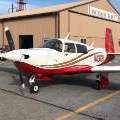When do you use takeoff flaps?
Takeoff Flaps
110 members have voted
-
1. When do you use flaps on takeoff?
-
Every takeoff, SOP91
-
Only when heavy2
-
Only on short runways6
-
On short runways when heavy4
-
During specific wind conditions1
-
Only on soft or poor runway sufaces1
-
Never3
-
I'm Peter the dentist, my wisdom could fit no standard poll option2
-
-
Members Online


Recommended Posts
Join the conversation
You can post now and register later. If you have an account, sign in now to post with your account.